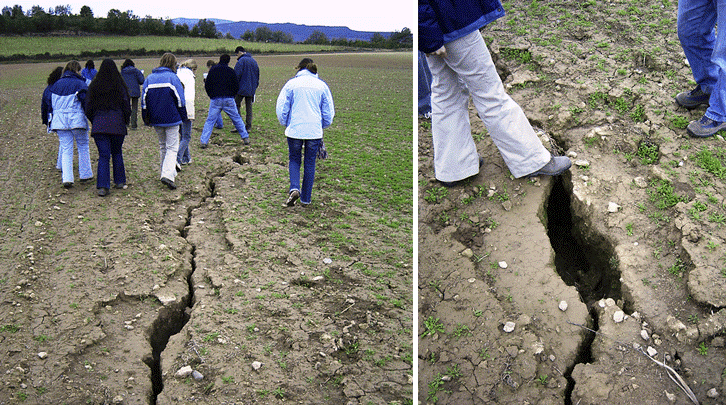A new effect of climate change: the sinking of the terrain

In recent years, various areas of Catalonia have been affected by intense processes of ground subsidence. In urban areas the effects on buildings and infrastructures cause significant damage and do not go unnoticed as when they take place in agricultural areas. The case of the Conca Basin is probably one of the best known. As with other locations, the origin of breakage is uncertain, hindering the implementation of appropriate remedial solutions.
A study published in Science of the Total Environment introduces the concept of ground subsidence in some karst configurations increasing during periods of drought.
This hypothesis is confirmed in a sector of the Fluvià river valley in northeastern Spain, where the collapse phenomena are related to the karstification of Eocene folded evaporite formations. In discharge areas, evaporites behave as confined aquifers affected by hypogenic carstification, created by artesian fluids with high dissolution pressure from an underlying carbonated aquifer.
During the research an inventory of sinkholes was made with chronological data revealing temporary clusters. These clusters show a good correlation with drought periods identified through historical data on rainfall, river flows and piezometric records. This temporary association is particularly evident for the latest and current drought which began in 1998, the most intense period included in the records (1940-present).
Climate projections based on recent studies predict an intensification of droughts in this area of northeastern Spain, which could be accompanied by an increase in the frequency and activity of sinkholes and associated risks.
Department of Geology
Universitat Autònoma de Barcelona
Carles Roqué
Universitat de Girona
References
Linares, R., Roqué, C., Gutiérrez, F., Zarroca, M., Carbonel, C., Bach, J., Fabregat, I. 2017. The impact of droughts and climate change on sinkhole occurrence. A case study from the evaporite karst of the Fluvia Valley, NE Spain. Science of the Total Environment, 579: 345-358

